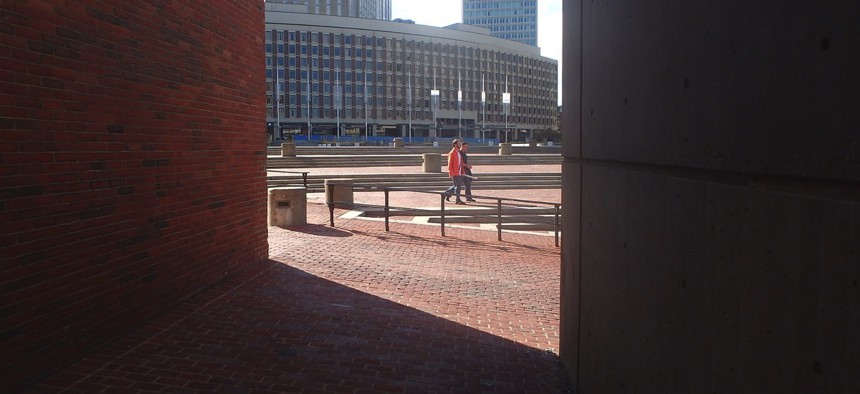Why There Won’t Be a ‘Final’ Version of the Redesigned Boston.gov

Boston City Hall Anthony Easton / Flickr.com

Connecting state and local government leaders
Tired of municipal websites structured like city halls, Beantown is soliciting user feedback to create an ever-evolving experience.
Boston.gov is getting a facelift the city’s Digital Team hopes will make information and services more accessible to residents.
Beantown will seek community feedback throughout the process and has provided citizens with a site to track the progress of the redesign.
High on the city’s wishlist of features are mobile responsiveness and “streamlined user journeys,” Chief Digital Officer Lauren Lockwood told Route Fifty, so someone like a small business owner isn’t hopping from department site to department site searching for desired information.
“I think a lot of people see the current site’s look and feel it’s pretty antiquated, but it’s also very siloed,” Lockwood said. “As one person put it, ‘It looks like people pulled open a file cabinet.’”
Fixing the site’s pitfalls will entail making the typeface readable on mobile and translations smooth. Municipal jargon will be reduced, so you won’t see hard-to-decipher acronyms post-launch.
City agency stakeholders chose two local companies, technology provider Acquia and web design firm IDEO, to develop the new website.
While IDEO was picked for its innovative, human-centered approach to web design, Boston liked the scalable, secure nature of Acquia’s fully-managed, cloud-based platform. The city currently uses the web content management system SDL Tridion, a competitor of Acquia’s.
“The mayor, his team and the chief information officer made the determination that, in order to achieve their digital strategy goals, they need a platform on which the city can innovate as rapidly as possible,” Todd Akers, Acquia public sector vice president, said in an interview. “The city wants to set a new civic standard for digital communications and engagement.”
When creating a resident- and visitor-focused site, user feedback is a must, so Boston has provided a channel for public engagement in the form of a progress-tracking site.
“The essence of the redesign is we want to make the website user-centric, rather than reflective of the structure of City Hall,” Lockwood said. “We’re meeting with different communities to understand how they access the site, why and why not.”
Boston isn’t the first major city to join Acquia’s client ranks.
The tech company recently secured contracts in New York and Los Angeles and has around 50 other state and local customers.
“We’re seeing the momentum accelerate,” Akers said.
Initially, Boston’s Digital Team will pilot a slimmed-down version of the new site to give users an idea of what it will look like and obtain their first thoughts.
City Hall aims to have a polished product go live during the first half of 2016, but calling it “final” would be a misnomer.
“What you have to remember is, while there is a date when we’ll flip the switch on the new Boston.gov, we’re sort of moving away from the process of a grand redesign that we launch, then let decay over time,” Lockwood said. “To one where we have it grow, change and adapt to user preferences.”
Correction: This story has been updated with the correct name of Boston's current web content management system, SDL Tridion.
(Photo by Anthony Easton / Flickr.com)
Dave Nyczepir is News Editor for Government Executive’s Route Fifty.

NEXT STORY: State and Local Governments on East Coast Brace for Hurricane Joaquin’s Impacts





